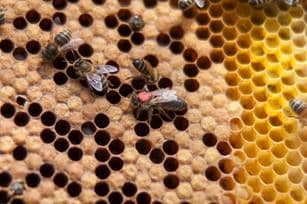Microphone for listening to bees

Beekeepers know that many bees die mostly from January to March. Therefore, from the middle of January, you should be especially careful. At this time, the beekeeper can judge the state of the family only by the noise of the bees inside the hives. In January, you can listen to families once a week, in February, twice, and in March – all the time, in one or two days. Do this work very carefully, so as not to disturb the bees.
When the family winters normally, the amount of oxygen consumed by it and the carbon dioxide released is in the optimal ratio for the family. With the excitation of bees, this ratio may be violated. That is why it is necessary to avoid unnecessary anxiety of the bee family during wintering.
Listening, you can catch the different sounds that bees are making.
A barely audible, even noise speaks of a happy winter. At an elevated temperature, noisy families are more noisy, while in a low temperature, they are weak (when the bees are in the hibernate). If among the general buzz can be heard the sounds of single bees – hence, in the hive there is no uterus. Starving bees make a faint noise, reminiscent of the rustling of leaves. On the contrary, a strong noise gives reason to believe that honey has crystallized and bees are thirsty. The families affected by varroateaom are also intensely noisy and worried.
In order to better hear all these sounds and determine by them whether the bees are hibernating well or badly, I use a portable electromedophone “Vitia”.
To this sensitive device, the manufacturer guarantees trouble-free operation at an ambient temperature of -10 to +50 њ C. However, in January I had to listen to bees at a temperature of 16-18 њ C frost, and the device never failed.
To use an electromogaphone for listening to bees, I made a cap from the Plexiglas, to which a 750-800 mm rubber tube was connected. The megaphone was supplemented with a switch of type TP 1-2, an output transformer from a transistor receiver and a connector for electrodynamic headphones. The switch and output transformer are well placed inside the case under power sources – two 3336L batteries. In head phones like TG-1, you need to remove a 3.3 kOhm thyristor located in the case of variable resistance, – the megaphone is ready for operation.
Before listening to the lecture, carefully clean the debris and debris with a wire with a right-angled end wrapped around the gauze. Then I put on the microphone cap with a rubber tube. With the help of the switch, I turn off the internal dynamic head and turn on the headphones. I put the phone into the chute and turn on the microphone. Audibility is very good, you can clearly distinguish the sounds that bees are emitting.
Microphone for listening to bees
